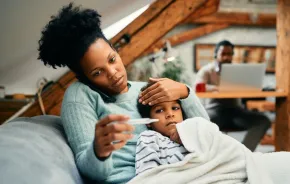
While many American teenagers have spent time caring for fake computerized babies as part of teenage pregnancy prevention programs, a recent Australian study showed such programs may actually lead to more teens getting pregnant.
The study, published in The Lancet, looked at a Virtual Infant Parenting (VIP) program that included sessions on parenting and caring for a computerized baby for a weekend. The VIP program had 1,267 girls aged 13 to 15 compared to 1,567 girls who took standard sex education classes.
“The trial found that the girls who participated in the program were more likely both to experience a birth and to have an abortion before the age of 20 than those who hadn’t had the intervention,” reports The New York Times.
Why did the program backfire?
It’s pretty easy to imagine that playing with baby dolls actually makes the idea of parenting more enticing with researchers finding that teens involved in the study received positive feedback when playing with their “babies” from their peers and family at “an age when they crave such attention.”
Researchers have a few other ideas as to why the program didn’t reduce teen pregnancy rates: the information came too late in the girls’ lives; only girls participated in the program; and participants in the VIP program came from lower income homes than the girls in the traditional sex ed group. (This last part is of particular note; a 2012 study from the National Bureau of Economic Research found teenage childbirth to be more common among girls from lower income families.)
What actually works
The results of this study are particularly alarming since an estimated two-thirds of school districts in the U.S. use programs like VIP. The good news: We already know how to lower the teenage birth rate in America.
A recent study published in the Journal of Adolescent Health found the rapid drop in the teenage pregnancy and birth rates in the United States (down by 42 percent) can be completely attributed to increases in contraceptive use.
“By definition, if teens are having the same amount of sex but getting pregnant less often, it’s because of contraception,” says Laura Lindberg, the study’s lead author.
No specific contraceptive method was singularly effective, but Lindberg’s team found teens were both using contraceptives and combining methods more often. They were also more frequently using more effective methods of birth control including long-acting reversible contraceptives (LARCs) such as implants and IUDs.
In fact, when, thanks to a private grant, Colorado began offering LARCs for free to low-income teens, the state’s teen birth rate decreased by nearly half.
Not only did the Colorado program mean fewer unintended pregnancies, it gave, as Slate notes, young people “greater control over their own lives — a worthy end in itself.”
What to tell your teen
Here’s a statistic worth repeating to every tween and teen you know: If a teen uses no birth control method, they have an 85 percent chance of getting pregnant within a year.
“Using anything is way more effective than that 85 percent risk,” adds Lindberg of the study in the Journal of Adolescent Health.
So while the American teenage birth rate may be dropping, remember that the U.S. still has one of the highest rates of adolescent pregnancy among industrialized nations.
And those babies aren’t fake.











